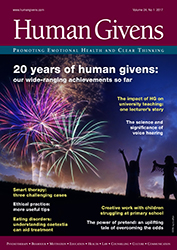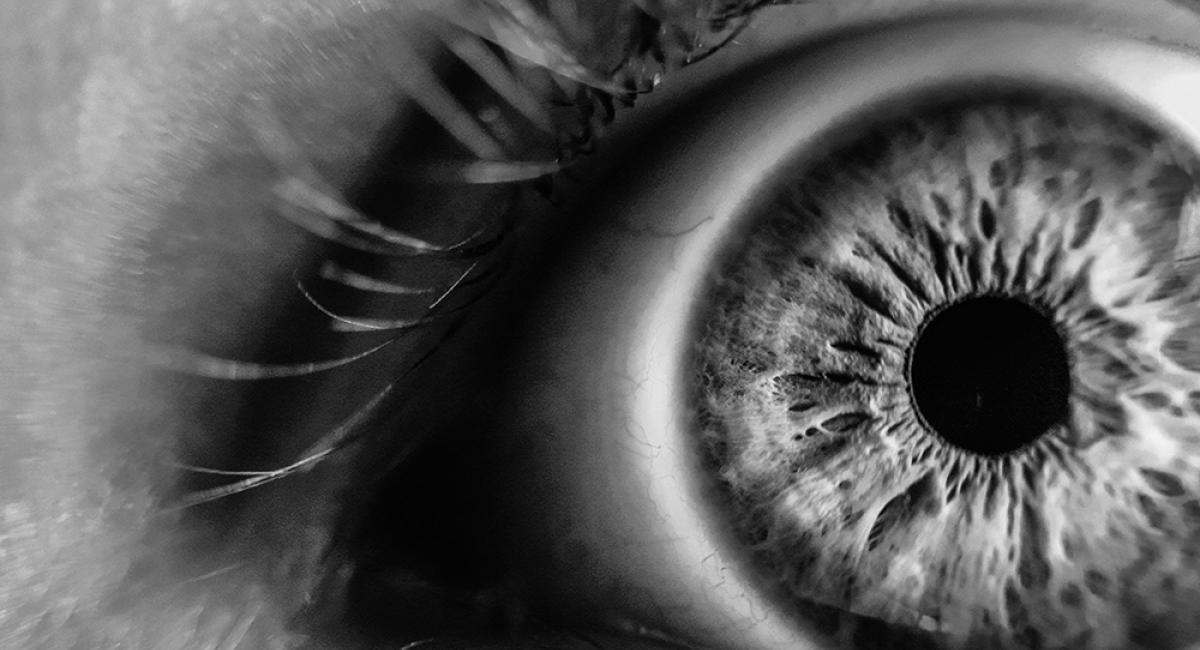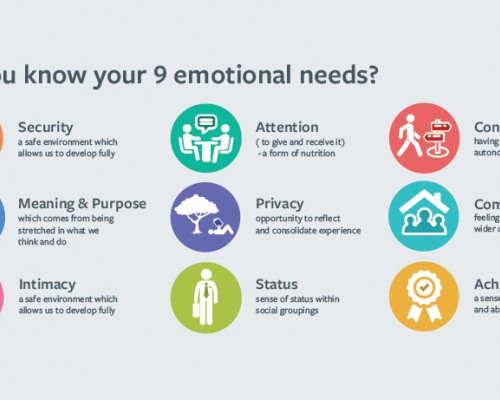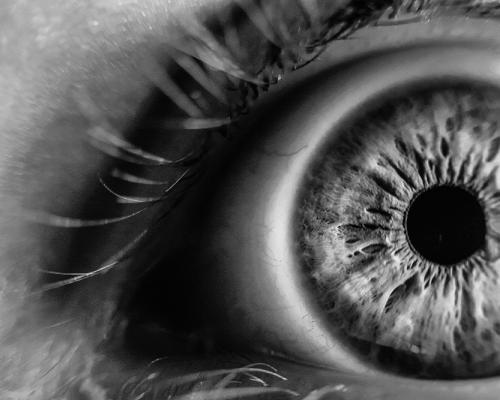The uses and abuses of hypnosis
Ivan Tyrrell warns that hypnosis is a powerful tool that must be used with care, understanding and integrity.
HUMAN givens therapists, with good intentions, are no doubt accustomed to viewing hypnosis, however we might term it, as a force for good. Using this procedure can, indeed, lead to powerful therapeutic results but it can also be powerfully harmful, depending upon the ideas absorbed by the person in trance. Therefore, it is important that it is always used judiciously. I should like, in this article, to review human givens understandings about hypnosis, its uses and abuses.
Unfortunately, something mysterious often attaches itself to talk about hypnosis, especially amongst those who style themselves hypnotherapists, as if practitioners who use it have highly specialised, even esoteric, skills – indeed, some seem to encourage that belief. This is added to by the fact that, although hypnosis has been known about for centuries, and been the subject of scientific research for over 200 years, there is still widespread misunderstanding about what it actually is. A quick look on the internet brings up a whole range of notions, broadly divided into ‘altered state of mind theories’ (it is a half-conscious state, seemingly between sleeping and waking; an unconscious, cataleptic condition; a form of dissociation; a dazed or bewildered condition; “regression in the service of the ego”; or a state of focused attention) and ‘non-state’ theories (it’s just play acting).
Clearly, we need a bigger organising idea and the human givens provides one: hypnosis is not a state of consciousness at all; it is any artificial means of accessing the REM state. [In human givens, we use the term REM state to describe both the stage of sleep known as rapid-eye-movement (REM) sleep, during which most dreaming occurs, and all other states in which human brain activity is akin to that experienced during REM sleep.] Thus hypnosis is a process, separate from the trance state that it induces, and its effects are no longer mysterious because this can account for all phenomena associated with it.
It is self-evident that hypnosis is an artificial process, rather than a state, when we take into account that we usually go into a trance without anyone putting us into it. Indeed, hypnotherapists will often tell clients whom they are trying to reassure about its safety that we go in and out of trance quite naturally all the time – which is true. We are in a trance whenever our attention is focused and locked. But this means our viewpoint is limited by whatever trance we are in. And in that lies the danger.
Anyone who can focus their attention, who has a good imagination or who can become emotionally aroused, will, at many points in time, enter trance. We are in a self-induced trance whenever we are highly emotionally aroused in what is usually thought of as a negative way: anger, fury, hatred, fear, anxiety, worrying, depression, envy, greed, selfishness – all such emotions cut us off from our ability to think rationally and give us a locked-in, limited view of reality. The same is true when we are in thrall to conditioned belief systems that we cannot see beyond, whether those of religions, cults or politics. Exciting events which we experience as positive are no less limiting in terms of our seeing the bigger picture – however thrilling it may be to support one’s team to victory, to feel swept away by music, moved by poetry, art or drama, to fall in love or make love passionately or to experience an awesome wonder that takes our breath away.
We can be in a trance when using skills, too. When driving, for instance, we can be totally unaware of passing landmarks or particular roads or even towns, because we have been doing so, in effect, on automatic. Becoming absorbed in creative activities such as cooking, gardening, writing, making art, music, poetry or pottery, singing and dancing puts us in a trance, as can reading and studying. Activities like singing and dancing are highly trance inducing, particularly when done in a group. Performing a sport or using professional skills well is also totally absorbing. We can even enter a trance state known as ‘flow’ when we know how to do something really well and, in doing that activity, our sense of having a separate self temporarily disappears and we effortlessly become one with what we are doing. This type of blissful trance, when we enter it, seems to function autonomously within us: we become the experience that we are creating. This wonderful capacity to go into flow, which some psychologists call a ‘peak experience’ and others describe as ‘being in the zone’, contributes a great deal to the sense of life being meaningful.
Trance can also be induced, intentionally or otherwise, by drugs, shock, slow rituals, hypnotic language, unexpected touch, prayer, sexual activity, reflection, staring, being asked to recall particular memories, greed, changing breathing patterns – indeed, any stimulus that arouses strong emotion and, paradoxically, any form of deep relaxation that lowers emotional arousal. The three most basic forms, which animals experience too, are dreaming, becoming highly emotional and learning new things – none of which requires hypnotic induction.
The way a focused state of attention is generated can have a direct bearing on the quality, depth and length of trance. For example, one reason for building exquisitely beautiful cathedrals, mosques, temples and palaces was that people entering them were automatically put in a trance state of awe, which made them highly suggestible and more accepting of whatever teachings or instructions were imparted to them in those environments. And when people wear masks, they go into trance then, too, because they feel disinhibited when people can’t see their facial expressions; they can behave in ways in which they would not normally behave, focusing attention on this sense of transformation.
The deepest trance of all
Human givens knowledge about the true nature of trance and hypnosis derives from Joe Griffin’s expectation fulfilment theory of dreams.1 For, of course, the deepest trance of all is dreaming. It is the most basic form of trance and it is first experienced in the womb when the foetus starts manifesting REM (rapid eye movement) sleep. (The eye movements are the visible sign of the activation of a specific brain circuit, known as ponto-genicula-occipital (PGO) waves.) It was neuroscientist and sleep research pioneer Michel Jouvet who had the extraordinary insight that instincts are programmed into us from our genes during REM sleep.1 We return to this trance state every time we dream and, as the expectation fulfilment theory shows, this is what maintains the integrity of our instincts. For dreams are metaphorical translations of emotionally arousing expectations not acted upon in the previous waking period. Dreams deactivate the emotional arousal, freeing the brain to respond afresh to each new day – thus maintaining the integrity of our instincts.
As mentioned, in the human givens approach, we refer to trance as the REM state because of the clear physiological similarities with the state of REM sleep. Deep trance, when induced by hypnosis, mirrors many aspects of REM sleep, such as imperviousness to outside sensory information, less sensitivity to pain, muscle paralysis, etc. In addition, aspects of how the REM state functions when we dream parallel methods used for inducing trance. Many hypnotherapists may use rhythmic movement to help generate trance (for instance, making repetitive hand movements or getting people to stare at spinning optical illusions), which links back to the primitive fish brain that we evolved from. (Fish, of course, respond extremely powerfully to rhythm because of their constant need to propel, steer and balance themselves in water, which they do by ‘spinning’ their fins.) Focusing attention mirrors absorption in a dream. Another similarity is in the orientation of attention: making a loud noise or sudden movement can put a person into trance, as that instantly captures their attention and involves the PGO-wave electrical brain activity seen in REM sleep and also known as the orientation response. When we first start to dream, the orientation response fires furiously. The expectation fulfilment theory of dreams explains that this is the mechanism for alerting the brain to the presence of unexpressed emotional arousals that need discharging in a dream.2
There are yet more similarities. The deep relaxation, which psychotherapists use as an induction into trance, parallels what happens as we start to fall asleep. And, once clients are relaxed, the guided imagery which we use to enable them to see their difficulties from a different perspective and overcome them parallels dream material arising – the difference being that, in an artificially induced trance, the therapist is guiding the process, whereas unacted-out emotional arousals from the previous day provide the ‘dream script' imagery in our sleep. As we know, metaphor is extremely powerful in therapy, when presented to a person in trance; and dreams are metaphors. Vivid trance experiences may involve hallucinations – clients may report ‘feeling’ on their faces the warmth of the sun that they were imagining, for instance – and dreams are hallucinatory. Research has shown that the same brain pathways are active when we either imagine or feel sensations and textures.3 In addition to this, phenomena that can be induced in trance are also spontaneously experienced in dreaming, such as amnesia (for the dream), anaesthesia and analgesia, body illusions, catalepsy, dissociation and time distortion.
Just as hypnosis is not the trance, however, so the REM state is not the dream. It is, in effect, the theatre where the dream takes place. As Joe Griffin showed, the dream script is separate from the REM theatre, our internal ‘reality generator’ and is acted out, or made real, within it.
The REM state, then, is active in all types of trance. It isn’t just a ‘relaxed’ or ‘passive’ state. It is active. It is involved in programming innate and learned knowledge – all kinds of learning, academic or otherwise (including therapy, conditioning and indoctrination) – and also when we daydream and solve problems. When we are traumatised, the REM state is the medium through which the traumatic event is captured by the brain and becomes a learned part of the survival templates. So the REM state is critically important to understand, especially if we are involved in delivering therapy.
The promotion of confusing half-truths
A half-truth is just as dangerous as a lie, even if offered with the best of intentions. Unfortunately a great many half-truths are spouted about hypnosis, and practitioners need to be careful not to promulgate them. They include the following.
“Hypnosis is a natural state of relaxation and concentration, with a heightened awareness induced by suggestion”
It isn’t. As I have described, it is an artificial means of accessing the REM state, which can even be done violently by capturing attention with a sudden loud noise or startling movement.
“Hypnosis is safe with no unpleasant side effects”
It is far from safe. It is an extremely powerful process and anything powerful can be used to do harm as well as good. Some people feel dizzy or uneasy, even after a relaxing session. They may feel psychologically unnerved about being ‘out of control’, particularly if they didn’t like the suggestions that were made to them. The literature is full of unpleasant or even dangerous effects that have been experienced after hypnosis. They include extreme fatigue; antisocial acting out; anxiety; panic attacks; attention deficit; body/self-image distortions; comprehension/concentration loss; confusion; impaired coping skills; delusional thinking; depression; depersonalisation; dizziness; fearfulness; headache; insomnia; irritability; impaired or distorted memory; nausea and vomiting; uncontrolled weeping and many, many more.
“You will be aware of everything that is said to you”
Sometimes that is the case when someone is in a light trance but very often it is not, and that again parallels with dreaming, since we don’t remember most of our dreams. When people go into a deep trance, they often have no memory of what the therapist said. That is not to say that they didn’t register it, but they cannot consciously recall it.
“Hypnosis has nothing to do with sleep – it is just an extremely relaxed state”
Clearly this is wrong because hypnosis is very directly related to sleep: the REM (dreaming) stage of sleep is the deepest trance state of all.
“A hypnotist cannot influence anyone to do anything against their will”
We know simply by delving into the history of hypnosis of many examples of unwanted influence. There are many modern day incidents, some of which are recorded on CCTV cameras, such as cashiers being hypnotised and handing over the money in their tills because they were put into a trance state, or people being shocked into trance and robbed in the street. Indeed, we have only to think of advertisers and politicians and rabble-rousers and gurus – all artificially induce the REM state in the people they wish to influence.
“A person’s own ‘moral code’ will protect them from doing anything against their own best interests”
There is no evidence that people can be relied upon not to do things against their own best interests and masses of evidence that they do so all the time. People’s moral codes are as flexible and changeable as the climate.
“The ‘unconscious’ is very wise”
I heard a hypnotherapist saying these exact words, in a lovely, caring tone, on a YouTube video. The unconscious is not necessarily wise at all. It is very much influenced by how we are brought up, our life experiences and the culture we live in and so on: our conditioning. As far as the unconscious mind is concerned the GIGO rule applies: garbage in, garbage out. Much of the therapeutic work done in trance is concerned with overriding automatic unconscious responses, altering unhealthy patterns and opening up limited perceptions.
The dark side of hypnosis
It is clear, then, that hypnosis – accessing the brain’s programming pathway – can be used to do harm as well as good, both intentionally and unintentionally. The following are risks which all ethically minded practitioners of hypnosis need to acknowledge and protect against.
Taking away someone’s sense of volition
We know that feeling a sense of control over our own lives is an innate human need. It is not up to therapists to make assumptions about what a client needs and thus it is highly important that any changes a client is guided to make, having been induced into a trance state, are in accordance with goals established beforehand and clearly understood by both client and therapist. It should also be our aim to give our clients the tools to cope without us, as quickly as possible. Thus, it is important for therapists to master effective brief techniques, teach our clients to relax themselves and not to become dependent on guided imagery delivered by us or on recordings that we might provide for them; these should only be used up until the point that they no longer need therapy.
Muddied intention
The intention of the therapist delivering the intervention is massively important in terms of outcomes. Indeed, if there is sincere intent to help a person, even a therapist who is not technically hugely proficient can get a good result. However, rare are those who can put their egos totally aside – and that means rare among therapists too. Ego can present a particular pitfall for some who use hypnotherapy, as they have discovered that it is easy to put people into trance, whereas, to most people, it seems a mysterious process. They might even have convinced themselves that it requires immense skill and specific shenanigans involving arm levitation and so on, so their egos puff up and that is hugely damaging to patients. (One of the reasons that we encourage practitioners to use the term guided imagery rather than hypnosis is to prevent misconceptions on the part of both therapist and client.) Fortunately, one of our innate resources, which is complementary to the focused trance state, is what Dr Arthur Deikman termed our ‘observing self’. At a biological level, this awareness occurs when we relax and our executive brain functions can operate without excessive emotional interference, enabling us to look at reality more objectively – and recognise if we are too carried away with ourselves.
Creating false (illusory) memories
The ease with which this can be done has been demonstrated countless times, particularly through the pioneering work of psychologist Elizabeth Loftus. In the 1980s and 1990s, whole families were pulled apart as a result of supposed memories of parental sexual abuse being ‘uncovered’ in therapy. The European Therapy Studies Institute, the predecessor for Human Givens College, put on the first major seminar to alert clinicians to false memory syndrome. In one case, a young woman recalled in therapy that she had been repeatedly raped by a group of Satanists that included members of her family and others in the local community. But it emerged later that she had been confabulating, along with her therapists. So therapists need to be vigilant not to make emotionally arousing suggestions, even in the form of questions (such as about the possibility of childhood neglect or abuse or that a partner might be having an affair), which a client may then dwell on and consequently dream about, then recall the dream and give credence to it, without due evidence.
Inducing hallucinations
This can lead vulnerable people to have psychotic breakdowns. Inducing hallucinations is the stock in trade of the stage hypnotist, of course. It’s dangerous because a person in a psychotic state is unable to distinguish between the dream state and waking reality in the way that we normally do.
Conditioning
As a form of learning, this inevitably involves the REM state and, one way or another, hypnosis is practised by all cults and political parties. For example, the use by politicians of abstract hypnotic words like ‘positive change’, ‘values’ or ‘principles’, forces people into an internal trance to search for what they understand to be the meaning of these words, even though the politicians give no concrete examples. (Everyone wants to change something in their life. And no individual wants negative change. So when a politician uses words like change or progressive it is a con trick.)
Anyone who thinks hypnosis is harmless might do well to remember that Hitler studied it after being cured by a hypnotist of the hysterical blindness that he suffered at the end of the First World War. His personality changed as a result of a strong suggestion given in trance by a psychologist who told him that he was special and that he had great personal powers and that, with these great powers, he could cure himself of the blindness. This acted as a post hypnotic suggestion and Hitler went on to induce receptive trance states in vast crowds at rallies, bombarding them with emotionally arousing abstract words without concrete meaning. He even adopted a stylised form of arm levitation as the Nazi salute.
Of course, in therapy, abstract language is used with benign intentions, to send clients on their own internal search to find meanings for ‘inner resources’, ‘creativity’ and ‘strengths’ etc, but it is important to remain mindful both of how power can easily be abused and of how unintended consequences can occur when language is used loosely. At the very least, over-use of trance-inducing positive abstractions can prevent a client from moving forward, if certain abstractions are not made concrete. For instance, suppose a client scales herself at a 2 for depression on a scale where 1 is the deepest of depressions and 10 is living life fully again. The therapist then asks what number of the scale the client will need to reach to feel satisfied. The client says 7 or 8. All we have here is a set of abstracts, including the descriptors for 1 and 10 and a couple of meaningless numbers above mid-scale. Unless the therapist ascertains the behaviour the client associates with 1 and 10, and with 7 or 8, the client has nothing concrete to work with, in terms of making positive changes – and the therapist has nothing for the client to rehearse achieving in guided imagery. Although we teach trainee therapists to ask, in effect, “What does that look like?” when clients talk in abstract terms, sometimes therapists themselves become entranced by the abstractions, go on their own internal searches, and fail to see past them. I have seen this sort of thing happen often over the years that I have acted as an examiner of trainee therapists. It can be surprisingly easy to be seduced into trance, even when you think you know better.
Unwanted telepathy
Therapists tend to go into a deeply focused state when they are trying intensely to help somebody and, at such moments, a confusion of ego boundaries can occur, harming both therapist and client. With every connection we make with another person, there is a field of relationship involved; how this works we describe in Godhead: the brain’s big bang.4 Many therapists experience telepathy with their clients. For instance, if a therapist, for whatever reason, is feeling below par and wishes that they had fewer clients that day, clients will often start to ring up and postpone appointments. It is astonishing and happens far too often to be down to chance. (A related common experience is that of suddenly knowing that someone close has died, even if they were miles away and previously thought to be in good health.)
Damaging a person’s very essence
When we use hypnotic techniques to help someone access the REM state, we are tapping into that individual’s unique ‘essence’, the life force programmed into them after conception that then awaits certain influences – as a spark awaits wind for it to fan into flame – so that it may grow and develop and thus continue the evolutionary process. A hypnotic induction is, in fact, a form of trespass upon the private mental territory of another’s essence. This is territory that we should only enter respectfully if invited in, and we must be careful to close the gate properly when we leave. Using hypnosis repeatedly with an individual is ultimately weakening to them, because it can put out the spark of volition by making them increasingly open to suggestion, and not only to the suggestions of their therapist. That is one reason that therapy should be as brief as possible.
The aim of therapy is to help people detach and cope alone, not become dependent. Extreme cases of repeated hypnosis can even eventually derange the brain, as when ordinary people start behaving in grotesque ways and think of others not as humans but as ‘things’. When the self-righteous behead people who don’t share their religion or think it is acceptable to rape, torture and kill people, it is certain that emotional arousal has used to hypnotise them via fear, chanting, repetition, or other means, to make them become highly suggestible. All dangerous mass movements involve hypnosis and the programming of people, once they are emotionally aroused.
This danger has long been known. As the renowned Indian Hindu monk Swami Vivekananda said, “Think of the mind like a team of wild horses, and rather than controlling them through muscular strength and taking hold of the reins, you ask another to hit them on the head to stun them into a submissive state for a short period of time. Each time another stuns the horses into submission the person loses an amount of their own mental energy. From continued regular sessions of hypnosis from another person, entering into this docile state, instead of gaining power and better control, the mind can become a shapeless powerless mass eventually leading to the mental asylum.” A version of this is what may happen if therapists repeatedly try to bolster a psychologically damaged person by telling them that they are talented or desirable or have a great future ahead, on the basis of no evidence whatsoever, and doing nothing concrete to help make this a reality. Careless use of hypnosis can interfere with people’s psychological and spiritual development and it is not melodramatic to call that psychic murder.
Using the REM state in therapy
Of course there is a bright side to hypnosis, otherwise we would not have been teaching how to use it in therapy all these years. To recap, hypnosis is the accessing of the REM state artificially by focusing attention until it can be guided. Once a person is in that trance state, therapists can make powerful, positive psychological interventions, such as offering metaphors, embedding empowering suggestions, giving direct instructions and guiding rehearsal of desired new behaviours in imagination, such as successful public speaking or driving confidently. Trance also provides the best platform for unhooking strong emotions from traumatic memories that the brain has interpreted as life threatening, which is why, using specific techniques, it offers the quickest means to help people overcome phobias and PTSD. Trance plus therapeutic interventions is what constitutes hypnotherapy.
We can clearly see, too, how hypnosis fits with the APET™ model of activating agent, pattern matching, emotion and thought. The activating stimulus is whatever means the therapist chooses for inducing the REM state in the client (we recommend gentle ways, not harsh ways like shock). The client’s brain pattern matches to the empowering ideas suggested by the therapist, and gives them personal meaning. Every pattern match fires an emotional response (an expectation), however subtle. The client may then think about the new ideas and rehearse new possibilities.
The stages of effective hypnotherapy
These are:
• Induction: artificially access the REM state by focusing attention
• Trance: relax the clients to prepare them for learning
• Educate: guide clients' attention and add new information that gives their lives richer context. All learning happens in trance. Whenever we recognise something familiar in the world, it is always because we are making a pattern match between what is out there in the environment and an internally stored pattern, which we normally call a memory. Our brains are constantly pattern matching to the outside world and we become aware of that only if something different from the norm occurs – the orientation response fires and our attention is drawn to it. All learning, by its nature, involves novelty and we have to focus, however briefly, on what is new and different in order to absorb it. That requires us to go into the REM state. When the new knowledge to be absorbed is profound, we need to introspect about this new pattern match and adjust our model of reality to it. Thus all learning is post-hypnotic.
• Heal – help bring about psychological healing by guiding a person to access positive life resources and harness the mental processes needed to rehearse healthy new behaviours; and help physical healing by motivating the body to heal itself.
• Ensure volition: give complete control back to client.
First, do no harm
Whether trance work does harm or not depends on many factors including:
• the integrity of the person doing the therapy
• the therapist’s sincerity and intelligence (emotional and otherwise)
• their level of expertise and how well they use language skills, especially metaphor
• the therapist’s level of psychological knowledge and self-knowledge
• their understanding of clients' innate emotional needs
• the therapist’s ability to put their own ego aside
• the nature of the ideas absorbed by the patient.
Confucius is reported to have said: “The expectations of life depend upon diligence; the mechanic that would perfect his work must first sharpen his tools.”
When we use hypnosis to induce trance in psychotherapy, our brain is our prize tool. So we must keep it sharp by improving our understanding of what we are doing, developing our skills and staying alert and focused when activating the REM state in our clients. Otherwise we can harm the very people we want to help.
The original version of this article first appeared in the Human Givens Journal, Volume 22, No. 1, 2015. © Ivan Tyrrell.
 We need your help – this article originally appeared in the Human Givens Journal which takes no advertising at all, in order to maintain its editorial independence.
We need your help – this article originally appeared in the Human Givens Journal which takes no advertising at all, in order to maintain its editorial independence.
To survive it needs new readers and subscribers – if you have found the articles, case histories and interviews on this website helpful, and would like to support the human givens approach – please take out a subscription or buy a back issue today.
References
-
Jouvet, M. (1967) Mechanisms of the states of sleep. A neuro-pharmacological approach. Presented at the 45th annual meeting of, and published by, the Association for Research in Nervous and Mental Disease, 45, 86–126. New York.
-
Griffin, J and Tyrrell, I (2014). Why We Dream: the definitive answer. HG Publishing, East Sussex.
-
Lacey, S, Stilla, R and Sathian, K (2012). Metaphorically feelings: comprehending textural metaphors activates somatosensory cortex. Brain and Language, 120, 3, 416–21.
-
Griffin, J and Tyrrell, I (2011). Godhead: The Brain’s Big Bang – The Explosive Origin of Creativity, Mysticism and Mental Illness. HG Publishing, East Sussex.
Latest Tweets:
Tweets by humangivensLatest News:
HG practitioner participates in global congress
HG practitioner Felicity Jaffrey, who lives and works in Egypt, received the extraordinary honour of being invited to speak at Egypt’s hugely prestigious Global Congress on Population, Health and Human Development (PHDC24) in Cairo in October.
SCoPEd - latest update
The six SCoPEd partners have published their latest update on the important work currently underway with regards to the SCoPEd framework implementation, governance and impact assessment.
Date posted: 14/02/2024













